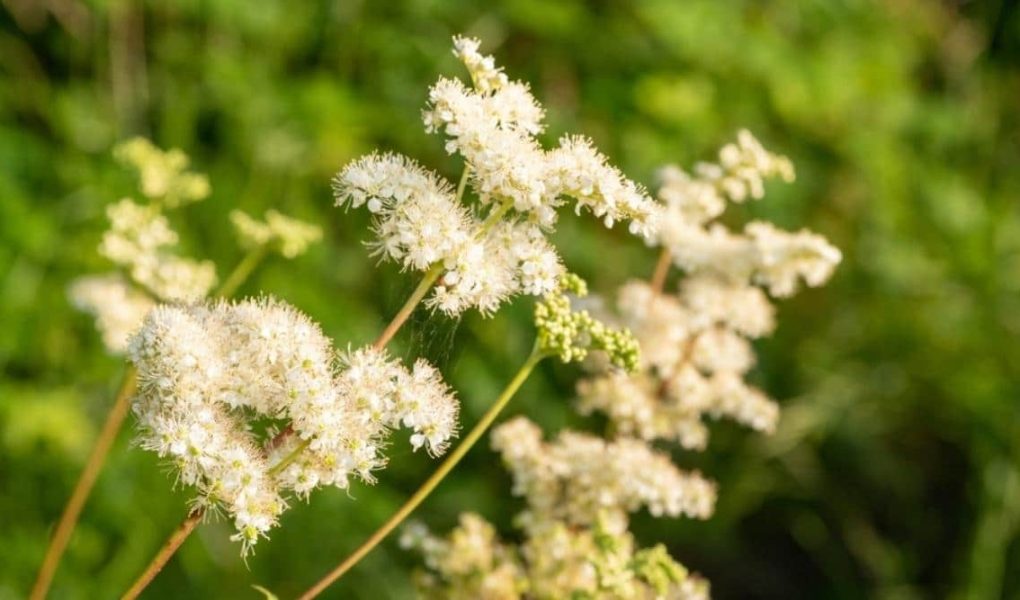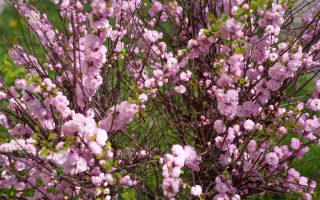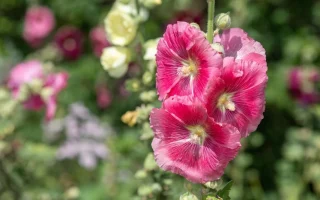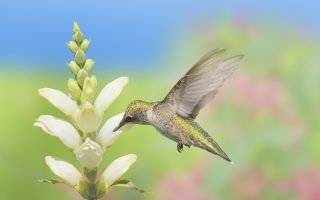lareddepathways.com – Meadowsweet (Filipendula ulmaria) is a beautiful and fragrant perennial flower that has been cherished for centuries, both for its ornamental qualities and its historical uses in herbal medicine. Known for its creamy white or pink clusters of small flowers and its lush, fern-like foliage, Meadowsweet is an excellent choice for adding texture, fragrance, and ecological value to any garden. Whether planted in cottage gardens, woodland settings, or along the edges of ponds, this charming flower brings both beauty and a rich scent to the landscape.
Origins and Habitat
Native to Europe and parts of Asia, Meadowsweet thrives in moist, well-drained soils, often found in meadows, wetlands, and along riverbanks in the wild. It naturally grows in areas with partial to full sun, making it well-suited to a variety of garden types, particularly those with a damp or boggy environment. Over the centuries, it has been introduced to North America, where it has found a place in many gardens, both ornamental and medicinal.
Meadowsweet has been a fixture in traditional herb gardens and natural landscapes due to its adaptability and resilience. Its ability to grow in moist environments, such as wetlands and rain gardens, has made it a popular choice for gardeners seeking to add both beauty and functionality to their outdoor spaces.
Characteristics and Varieties
Meadowsweet is a tall, clump-forming perennial that typically grows between 3 to 5 feet in height, though some varieties can reach up to 6 feet or more in ideal conditions. The plant features clusters of small, creamy white or pale pink flowers that bloom in late spring to early summer, creating a frothy, cloud-like appearance. The flowers are fragrant, with a sweet, almond-like scent that attracts pollinators such as bees and butterflies, making Meadowsweet a valuable addition to any pollinator-friendly garden.
The foliage of Meadowsweet is equally striking, with dark green, deeply lobed leaves that resemble those of the common elderberry. These leaves form a dense, bushy rosette at the base of the plant and remain attractive throughout the growing season. The plant’s overall appearance is soft and airy, creating a relaxed, naturalistic feel in the garden.
While the traditional Meadowsweet is white-flowered, there are a few cultivars that offer different flower colors, such as pale pink or slightly deeper hues. The cultivar Filipendula ulmaria ‘Variegata’ is particularly popular for its strikingly variegated leaves, which provide additional visual interest in the garden.
Growing Meadowsweet
Meadowsweet is relatively easy to grow, provided it is planted in the right conditions. It thrives in moist, fertile soils, and prefers a sunny to partially shaded location. It is particularly well-suited to damp or boggy areas, such as along streams, ponds, or in rain gardens. If you don’t have a naturally wet area in your garden, you can create a moist environment by adding organic matter and improving drainage to maintain moisture levels throughout the growing season.
Planting Meadowsweet is best done in the spring or fall. Space the plants about 18 to 24 inches apart to allow for their spreading growth. Meadowsweet is tolerant of a variety of soil types, but it will perform best in slightly acidic or neutral soils that retain moisture. It is important to provide adequate water, especially during dry periods, as Meadowsweet thrives in consistently moist environments.
Once established, Meadowsweet is relatively low-maintenance. It benefits from periodic division every few years to maintain vigor and prevent overcrowding. To divide the plant, simply dig up the clump in early spring or fall, separating the root ball into smaller sections, and replant them in your desired location.
While Meadowsweet is a hardy plant, it may require some support as it grows, particularly in windy areas or if planted in heavy soil. A few strategically placed stakes or a gentle trellis can help keep the plant upright and prevent it from falling over.
Wildlife and Pollinator Benefits
Meadowsweet is an excellent plant for attracting pollinators to your garden. Its fragrant, frothy flower clusters are a magnet for bees, butterflies, and other beneficial insects. The sweet nectar in its blooms provides an essential food source for pollinators during late spring and early summer when many other flowers may not yet be in full bloom.
In addition to attracting pollinators, Meadowsweet also plays an important role in supporting local wildlife. The dense foliage provides shelter for insects, small birds, and other creatures, making it a valuable addition to gardens focused on sustainability and biodiversity.
Symbolism and Significance
In addition to its ornamental and ecological value, Meadowsweet has a long history of medicinal use. Traditionally, the plant has been used in herbal medicine to treat a variety of ailments, including fevers, pain, and inflammation. The flowers and leaves contain salicylic acid, which is chemically similar to aspirin, and the plant has historically been used to make teas and tinctures for treating pain and arthritis.
Meadowsweet also holds cultural significance in folklore, where it is often associated with the element of water and has been used in rituals and celebrations in various traditions. In some cultures, Meadowsweet is considered a symbol of love, harmony, and renewal, making it a fitting addition to gardens designed to evoke feelings of peace and tranquility.
Meadowsweet in Garden Design
Meadowsweet is an ideal plant for creating naturalistic, cottage-style gardens and for adding a touch of elegance to wildflower meadows. Its airy, frothy flowers and lush foliage make it a great choice for planting alongside other moisture-loving plants such as astilbes, ferns, and hostas. It also pairs beautifully with ornamental grasses, which can complement the soft, feathery texture of the plant.
In addition to its ornamental value, Meadowsweet can be used to create a calming atmosphere in the garden. Its tall, upright growth makes it an excellent plant for the back of borders or as part of a mixed perennial bed, while its attractive foliage provides a lush, green backdrop to other plants. It also works well in rain gardens and bog gardens, where it can help absorb excess water and prevent erosion.
Conclusion
Meadowsweet is a fragrant and versatile flower that brings beauty, texture, and ecological benefits to any garden. With its sweet-smelling flowers, fern-like foliage, and ability to thrive in moist environments, it is an excellent choice for creating a lush, naturalistic garden or pollinator-friendly space. Whether used in cottage gardens, woodland settings, or along the edges of ponds, Meadowsweet provides long-lasting visual interest and contributes to the health of local ecosystems. Its rich history, both medicinal and symbolic, only adds to its appeal as a valuable addition to your garden.




